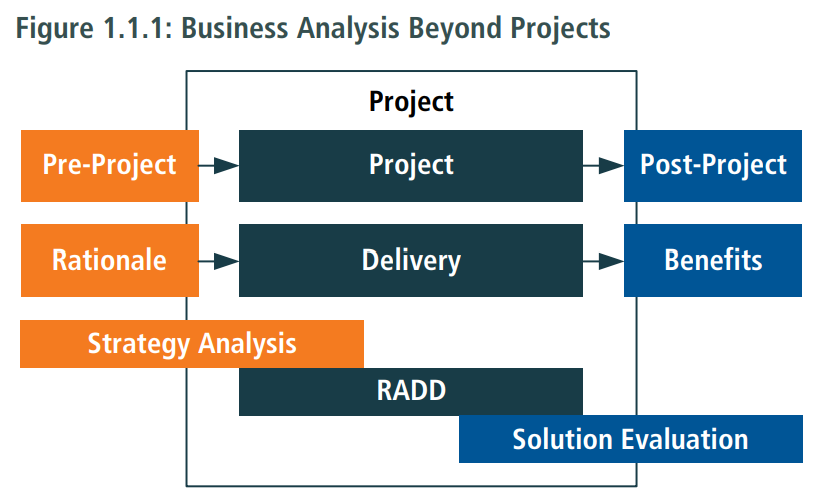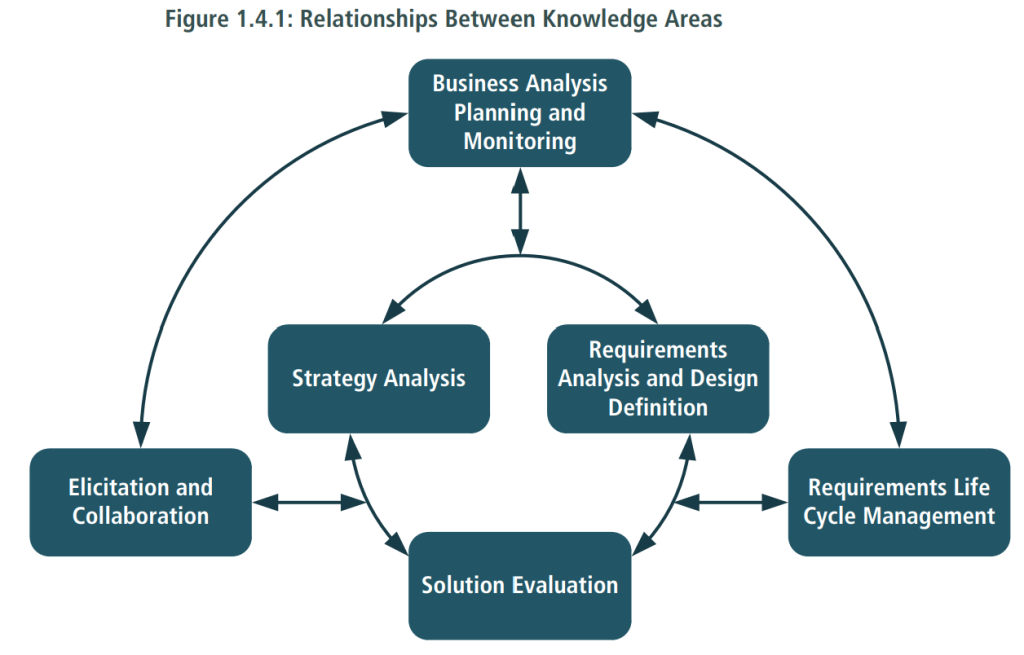A Guide to the Business Analysis Body of Knowledge® (BABOK® Guide) is the globally recognized standard for the practice of business analysis. The BABOK® Guide describes business analysis knowledge areas, tasks, underlying competencies, techniques and perspectives on how to approach business analysis
1.1 Purpose of the BABOK® Guide
The primary purpose of the BABOK® Guide is to define the profession of business analysis and provide a set of commonly accepted practices. It helps practitioners discuss and define the skills necessary to effectively perform business analysis work. The BABOK® Guide also helps people who work with and employ business
analysts to understand the skills and knowledge they should expect from a skilled practitioner.
Business analysis is a broad profession in which business analysts might perform work for many different types of initiatives across an enterprise. Practitioners may employ different competencies, knowledge, skills, terminology, and attitudes that they use when performing business analysis tasks. The BABOK® Guide is a common framework for all perspectives, describing business analysis tasks that are performed to properly analyze a change or evaluate the necessity for a change. Tasks may vary in form, order, or importance for individual business analysts or for various initiatives.
The six knowledge areas of the BABOK® Guide (Business Analysis Planning and Monitoring, Elicitation and Collaboration, Requirements Life Cycle Management, Strategy Analysis, Requirements Analysis and Design Definition (RADD), and Solution Evaluation) describe the practice of business analysis as it is applied within the boundaries of a project or throughout enterprise evolution and continuous improvement. The following image shows how three of the knowledge areas support the delivery of business value before, during, and after the life cycle of a project.

1.2 What is Business Analysis?
Business analysis is the practice of enabling change in an enterprise by defining needs and recommending solutions that deliver value to stakeholders. Business analysis enables an enterprise to articulate needs and the rationale for change, and to design and describe solutions that can deliver value.
Business analysis is performed on a variety of initiatives within an enterprise. Initiatives may be strategic, tactical, or operational. Business analysis may be performed within the boundaries of a project or throughout enterprise evolution and continuous improvement. It can be used to understand the current state, to define the future state, and to determine the activities required to move from the current to the future state.
Business analysis can be performed from a diverse array of perspectives. The BABOK® Guide describes several of these perspectives: agile, business intelligence, information technology, business architecture, and business process management. A perspective can be thought of as a lens through which the business analysis practitioner views their work activities based on the current context. One or many perspectives may apply to an initiative, and the perspectives outlined in the BABOK® Guide do not represent all the contexts for business analysis or the complete set of business analysis disciplines.
1.3 Who is a Business Analyst?
A business analyst is any person who performs business analysis tasks described in the BABOK® Guide, no matter their job title or organizational role. Business analysts are responsible for discovering, synthesizing, and analyzing information from a variety of sources within an enterprise, including tools, processes, documentation, and stakeholders. The business analyst is responsible for eliciting the actual needs of stakeholders—which frequently involves investigating and clarifying their expressed desires—in order to determine underlying issues and causes.
Business analysts play a role in aligning the designed and delivered solutions with the needs of stakeholders.
The activities that business analysts perform include:
- understanding enterprise problems and goals,
- analyzing needs and solutions,
- devising strategies,
- driving change, and
- facilitating stakeholder collaboration.
Other common job titles for people who perform business analysis include:
- business architect,
- business systems analyst,
- data analyst,
- enterprise analyst,
- management consultant,
- process analyst,
- product manager,
- product owner,
- requirements engineer, and
- systems analyst.
1.4 Structure of the BABOK® Guide
The core content of the BABOK® Guide is composed of business analysis tasks organized into knowledge areas. Knowledge areas are a collection of logically (but not sequentially) related tasks. These tasks describe specific activities that accomplish the purpose of their associated knowledge area.
The Business Analysis Key Concepts, Underlying Competencies, Techniques, and Perspectives sections form the extended content in the BABOK® Guide that helps guide business analysts to better perform business analysis tasks.
- Business Analysis Key Concepts: define the key terms needed to understand all other content, concepts, and ideas within the BABOK® Guide.
- Underlying Competencies: provide a description of the behaviors, characteristics, knowledge, and personal qualities that support the effective practice of business analysis
- Techniques: provide a means to perform business analysis tasks. The techniques described in the BABOK® Guide are intended to cover the most common and widespread techniques practiced within the business analysis community.
- Perspectives: describe various views of business analysis. Perspectives help business analysts working from various points of view to better perform business analysis tasks, given the context of the initiative.
1.4.1 Key Concepts
The Business Analysis Key Concepts chapter provides a basic understanding of the central ideas necessary for understanding the BABOK® Guide.
This chapter consists of:
- Business Analysis Core Concept Model™ (BACCM™)
- Key Terms
- Requirements Classification Schema
- Stakeholders
- Requirements and Design
1.4.2 Knowledge Areas
Knowledge areas represent areas of specific business analysis expertise that encompass several tasks.
The six knowledge areas are:
- Business Analysis Planning and Monitoring: describes the tasks that business analysts perform to organize and coordinate the efforts of business analysts and stakeholders. These tasks produce outputs that are used as key inputs and guidelines for the other tasks throughout the BABOK® Guide.
- Elicitation and Collaboration: describes the tasks that business analysts perform to prepare for and conduct elicitation activities and confirm the results obtained. It also describes the communication with stakeholders once the business analysis information is assembled and the ongoing collaboration with them throughout the business analysis activities.
- Requirements Life Cycle Management: describes the tasks that business analysts perform in order to manage and maintain requirements and design information from inception to retirement. These tasks describe establishing meaningful relationships between related requirements and designs, and assessing, analyzing and gaining consensus on proposed changes to requirements and designs.
- Strategy Analysis: describes the business analysis work that must be performed to collaborate with stakeholders in order to identify a need of strategic or tactical importance (the business need), enable the enterprise to address that need, and align the resulting strategy for the change with higher- and lower-level strategies.
- Requirements Analysis and Design Definition: describes the tasks that business analysts perform to structure and organize requirements discovered during elicitation activities, specify and model requirements and designs, validate and verify information, identify solution options that meet business needs, and estimate the potential value that could be realized for each solution option. This knowledge area covers the incremental and iterative activities ranging from the initial concept and exploration of the need through the transformation of those needs into a particular recommended solution.
- Solution Evaluation: describes the tasks that business analysts perform to assess the performance of and value delivered by a solution in use by the enterprise, and to recommend removal of barriers or constraints that prevent the full realization of the value.
The following diagram shows a general relationship between the knowledge areas.

